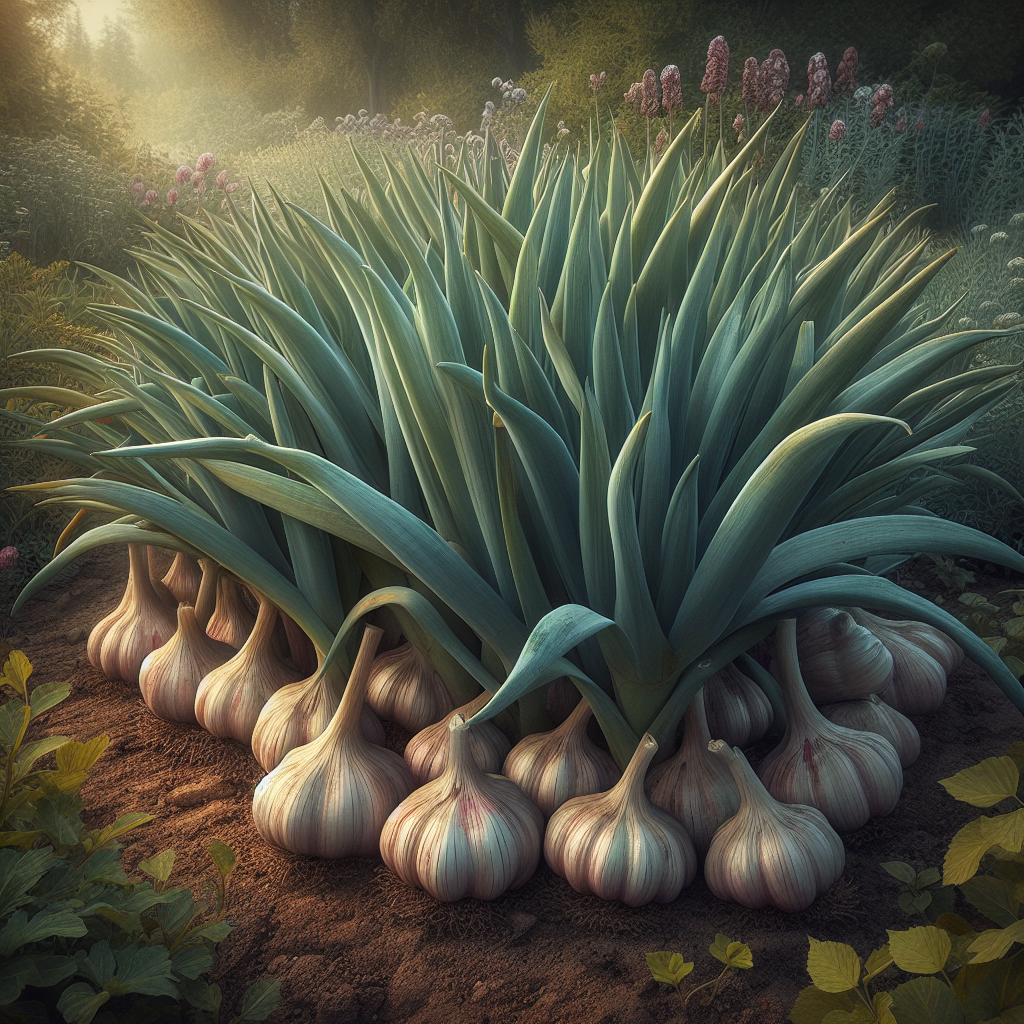Elephant Garlic, scientifically classified as Allium ampeloprasum (Ampeloprasum Group), stands apart in the Alliaceae family, offering a milder flavor profile and distinctive growth characteristics. In this guide crafted for hobbyist gardeners, we’ll delve into the intriguing world of Elephant Garlic, exploring its unique features, versatile uses, and essential tips for successful cultivation.
Botanical Overview
- Botanical Name: Allium ampeloprasum (Ampeloprasum Group)
- Common Names: Elephant Garlic, Russian or Levant Garlic
- Family: Alliaceae
Plant Description
Elephant Garlic, though not a ‘true’ garlic, shares a close kinship with leeks. With large blue-green strap-like leaves featuring a central rib, this hardy plant can grow up to 2 meters in height. Spring and summer witness the emergence of large pink or purple flowers. The bulbs, reaching sizes of up to 500g, form beneath the soil, consisting of 5 or 6 substantial cloves enveloped by small bulblets. Elephant garlic prefers rich, well-drained soil and thrives in full sun. Its adaptability allows it to flourish in a range of climates, from the tropics to temperate regions.
Uses
- Culinary Delight: Elephant garlic boasts a mild, sweet flavor, an enticing blend of garlic and onion. The large, easily peeled cloves can be consumed raw in salads, steamed, boiled as a vegetable, or incorporated into various dishes, offering high levels of vitamins A, C, and E.
- Pest Repellent: Beyond the kitchen, Elephant Garlic serves as a natural deterrent for pests like aphids, making it a valuable ornamental addition, especially in the back of rose gardens.
Planting Details
- Planting Time: In cool climates, opt for autumn or spring planting, while warmer climates offer flexibility in spring, autumn, or winter.
- Planting Depth: Place the tops of the bulbs approximately 5 cm below the soil surface.
- Spacing: Ensure a spacing of about 30 cm between plants to allow for optimal growth.
Harvesting
Bulbs are ready for harvest when the flowers begin to dry out, typically occurring in the second year after planting. Dig up the entire plant, leaving part of the stem attached, and hang the bulbs to dry in a shady spot. Properly dried bulbs can be stored for up to 10 months.
Tips for Hobbyist Gardeners
- Clove Alternation: Elephant Garlic tends to alternate between producing cloves and rounds. Rounds, or large cloves, often result in a single large bulb and a flower stalk. Understanding this cycle enhances expectations during the growing process.
- Adaptability: Elephant Garlic’s adaptability makes it an excellent choice for gardens in warmer, more humid climates where traditional garlic faces challenges.
- Companion Planting: Strategically place Elephant Garlic in your garden as a natural pest control measure, particularly in areas prone to aphid infestations.
- Patient Harvesting: To maximize flavor and bulb development, exercise patience in harvesting, waiting until the flowers exhibit signs of drying out.
Enhances the overall aesthetics of your green space
Incorporating Elephant Garlic into your garden not only introduces a unique flavor to your culinary endeavors but also enhances the overall aesthetics of your green space. By embracing its distinctive growth patterns, understanding its culinary versatility, and implementing essential tips, hobbyist gardeners can cultivate a flourishing Elephant Garlic crop, adding a delightful twist to their Allium collection.
